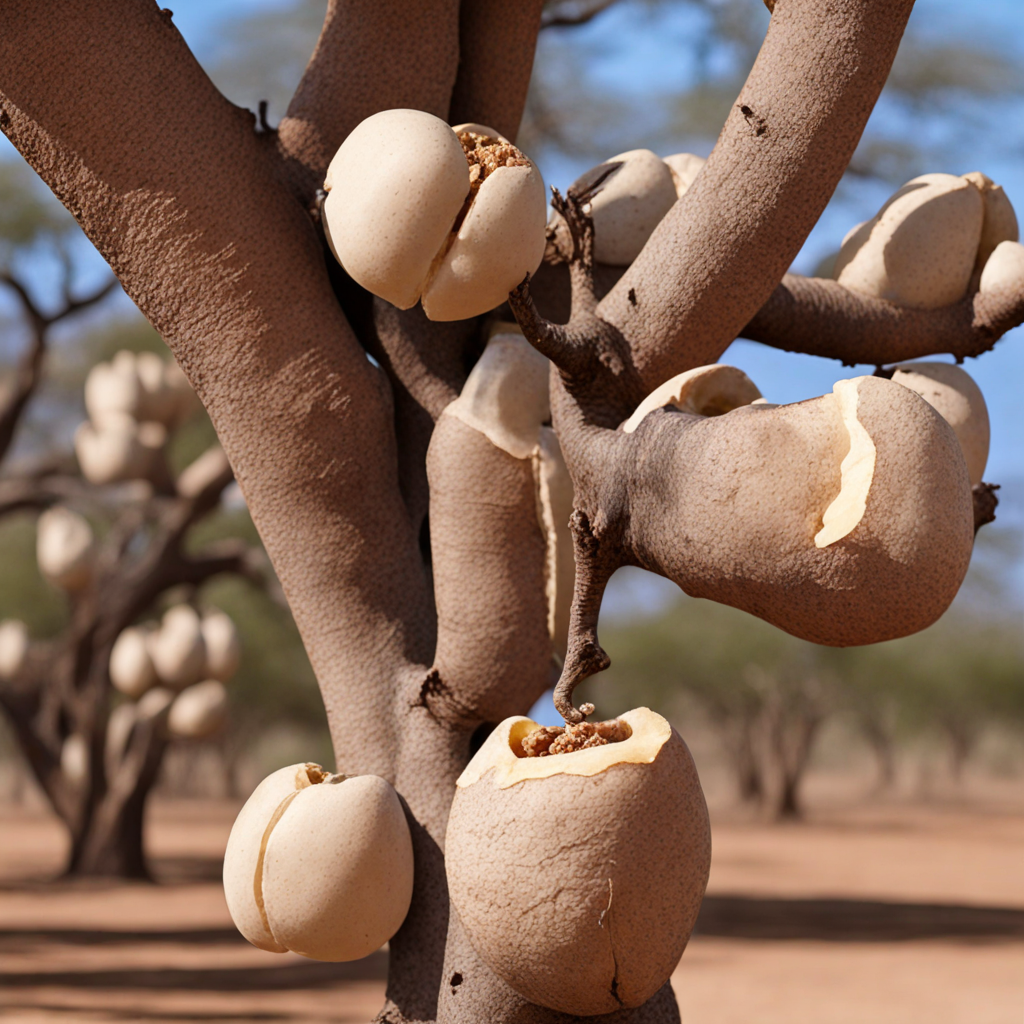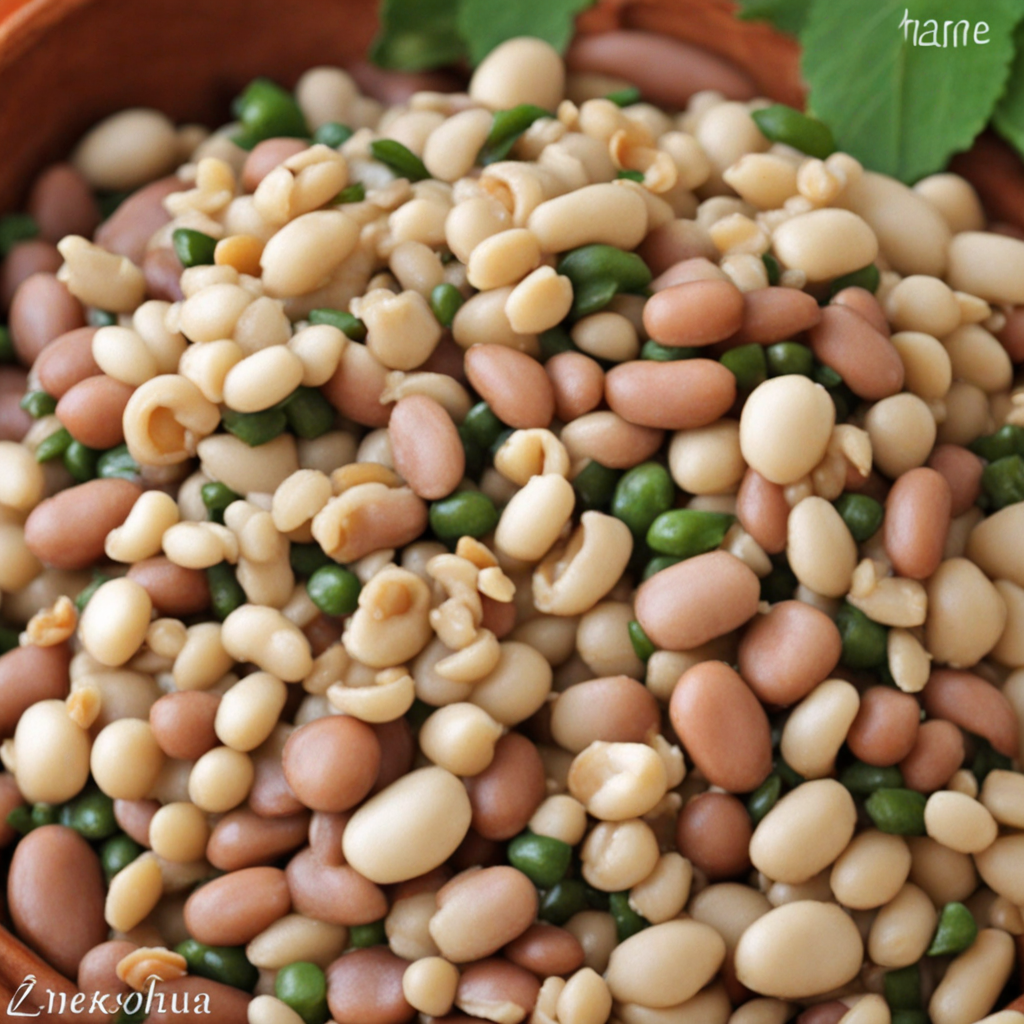Sugar Beans neDovi
Sugar Beans neDovi is a delightful and hearty dish hailing from Zimbabwe, showcasing the rich culinary heritage of the region. At its core, this dish features sugar beans, which are small, round, and have a slightly sweet flavor that sets them apart from other legumes. The beans are simmered to tenderness, absorbing the flavors of the accompanying ingredients, creating a comforting and satisfying base. They are typically cooked in a thick, savory peanut butter sauce known as 'dovi', which is a staple in many Zimbabwean households. The combination of these two elements results in a dish that is both nutritious and delicious, perfect for those looking to explore new flavors. The dovi sauce is made by blending ground peanuts with spices such as garlic, onion, and sometimes a touch of chili for added heat. This mixture is then cooked down to create a creamy, rich sauce that envelops the beans, enhancing their natural sweetness while adding depth and complexity. The dish may also include vegetables such as spinach or tomatoes, which contribute vibrant colors and additional nutrients. With each bite, the contrasting textures of the soft beans and the smooth sauce create a delightful mouthfeel, making it an enjoyable experience for the palate. Sugar Beans neDovi is often served with sadza, a traditional Zimbabwean staple made from maize meal, which acts as a perfect accompaniment to soak up the flavorful sauce. The combination of the hearty beans, the nutty richness of the dovi, and the comforting texture of sadza makes for a wholesome meal that is as satisfying as it is delicious. This dish not only represents the essence of Zimbabwean cuisine but also invites food lovers to explore the unique flavors and culinary traditions of the region.
How It Became This Dish
Sugar Beans neDovi: A Culinary Journey through Zimbabwean History Introduction Sugar Beans neDovi is more than just a dish; it is a tapestry woven with threads of Zimbabwe’s agricultural history, cultural practices, and communal values. This beloved dish combines the rich, nutty flavor of sugar beans with a creamy groundnut sauce (dovi), creating a harmonious blend of taste and tradition. To understand Sugar Beans neDovi, one must delve into its origins, cultural significance, and the evolution of this cherished culinary staple in Zimbabwe. Origins of Sugar Beans Sugar beans (Phaseolus vulgaris), also known as red kidney beans or common beans, are believed to have originated in Central and South America before being introduced to Africa through European colonial trade routes. In Zimbabwe, their introduction aligned with the agricultural practices of indigenous communities, who embraced them due to their nutritional value and adaptability to local growing conditions. The cultivation of sugar beans in Zimbabwe has its roots in the communal farming systems established by various ethnic groups, including the Shona and Ndebele. These groups utilized traditional agricultural methods, often rotating crops to maintain soil fertility. Sugar beans became an integral part of local diets because they are rich in protein, fiber, and essential nutrients. Their ability to thrive in the diverse climates of Zimbabwe made them a staple crop, contributing to food security and sustaining local populations. Cultural Significance In Zimbabwean culture, food is not merely sustenance; it is a symbol of identity, community, and tradition. Sugar Beans neDovi holds a special place in this cultural landscape. The dish is often prepared during family gatherings, celebrations, and communal feasts, where it serves as a source of nourishment and a means of bringing people together. The act of cooking and sharing food fosters community bonds, reinforcing social ties and cultural heritage. Dovi, the groundnut sauce that accompanies sugar beans, carries its own cultural weight. Groundnuts (peanuts) are native to South America but were introduced to Africa, where they quickly became a cherished ingredient. The local preparation of dovi involves grinding roasted groundnuts into a creamy paste, often enhanced with spices, herbs, and sometimes vegetables. This sauce not only enriches the flavor of sugar beans but also symbolizes the resourcefulness of Zimbabwean cooks, who transform simple ingredients into a rich and satisfying meal. In many Zimbabwean households, Sugar Beans neDovi is considered a comforting dish, often served with sadza (a staple maize porridge) or rice. It reflects the values of hospitality and generosity inherent in Zimbabwean culture, where sharing food is an expression of love and care. Development Over Time The evolution of Sugar Beans neDovi can be traced through the historical changes that have shaped Zimbabwean society. The colonial era brought significant shifts in agricultural practices and food production. European settlers introduced modern farming techniques and crops, but indigenous communities continued to cultivate traditional crops, including sugar beans. This period saw the blending of culinary practices, as local ingredients were combined with European influences, leading to the diverse food landscape that characterizes Zimbabwe today. Following Zimbabwe’s independence in 1980, there was a renewed focus on reclaiming cultural identities, including traditional foods. The government promoted local agriculture, encouraging the cultivation of indigenous crops like sugar beans. This resurgence of interest in traditional foods was a response to the globalization of diets and the encroachment of fast food culture. Zimbabweans began to celebrate their culinary heritage, and Sugar Beans neDovi emerged as a symbol of this cultural renaissance. In recent years, the dish has gained popularity beyond Zimbabwe's borders, thanks to the diaspora community. Zimbabweans living abroad have sought to preserve their culinary traditions, often sharing recipes and preparing traditional meals for their families. This globalization of Sugar Beans neDovi has led to variations in preparation methods and ingredient substitutions, reflecting the adaptability of the dish in different contexts. Nutritional and Economic Aspects The nutritional profile of Sugar Beans neDovi is another aspect that has contributed to its enduring popularity. Sugar beans are an excellent source of plant-based protein, making them a valuable food for both vegetarians and meat-eaters. When combined with the healthy fats from groundnuts, the dish provides a well-rounded meal that supports the dietary needs of families. From an economic perspective, the cultivation of sugar beans has become increasingly important for smallholder farmers in Zimbabwe. As a drought-resistant crop, sugar beans are ideal for regions prone to climate variability. Their market demand has also grown, both locally and internationally, providing farmers with an opportunity to improve their livelihoods. Organizations and NGOs have been working to promote sustainable agricultural practices, ensuring that sugar bean cultivation remains viable and beneficial for communities. Modern Interpretations and Innovations While the traditional preparation of Sugar Beans neDovi remains popular, modern interpretations have emerged, reflecting contemporary tastes and dietary preferences. Vegan and vegetarian adaptations of the dish have gained traction, as more people embrace plant-based diets. Additionally, chefs and home cooks are experimenting with various spices and flavorings, introducing new elements to the classic dish while retaining its core essence. Social media has played a significant role in the revival and promotion of Sugar Beans neDovi. Recipes are shared across platforms, and cooking demonstrations offer insights into preparing the dish authentically. This visibility has sparked interest not only among Zimbabweans but also among food enthusiasts globally, contributing to a broader appreciation of Zimbabwean cuisine. Conclusion Sugar Beans neDovi is a culinary gem that encapsulates the rich history and cultural tapestry of Zimbabwe. From its origins in indigenous farming practices to its role as a symbol of community and identity, this dish continues to evolve while remaining rooted in tradition. As Zimbabweans navigate the complexities of modern life, Sugar Beans neDovi stands as a testament to resilience, adaptability, and the enduring power of food to bring people together. Whether served at a family gathering, a communal feast, or a simple weeknight dinner, Sugar Beans neDovi nourishes not only the body but also the spirit, reminding us of the importance of our culinary heritage and the bonds that food creates. As it continues to be passed down through generations, this dish will remain a cherished part of Zimbabwean culture for years to come.
You may like
Discover local flavors from Zimbabwe







